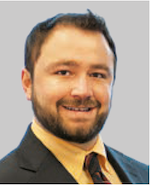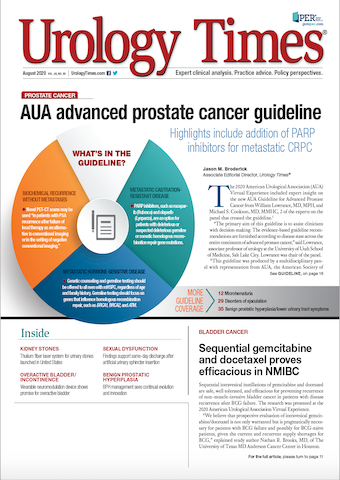Publication
Article
Urology Times Journal
The business of urology: Reducing required minimum distributions in retirement accounts
Author(s):
Converting funds to Roth dollars is among the most effective strategies.
It looks like my required minimum distributions in the future could be substantial. Is there anything I can do to reduce them before I reach age 72?
Jeff Witz, CFP

The IRS says that you cannot keep pretax retirement funds in your retirement account indefinitely; it mandates that you must start taking distributions when you reach a certain age. These forced distributions are commonly known as required minimum distributions (RMDs). Many physicians worry about the impact RMDs will have on their taxes in future years.
With passage of the SECURE Act in early 2020, the IRS now mandates that RMDs begin by age 72 instead of age 70½. The RMD for any given year is calculated by taking the account balance as of December 31 of the previous year and dividing it by a certain factor; this is found in the IRS’ published tables and is based on the age of the account owner. The RMD can also be impacted if a spouse beneficiary is more than 10 years younger than the account owner.
For example, if a 74-year-old physician has $500,000 as their 2019 ending account balance in their IRA, they must take an RMD. That RMD is calculated by taking $500,000 and dividing it by 23.8 (found on the IRS Uniform Lifetime Table). The result is $21,008.40—the amount the physician must distribute from their account in calendar year 2020 to satisfy their RMD. If a physician has multiple pretax retirement accounts, they must aggregate all the account values together to determine the RMD amount across all accounts. The entire RMD can be distributed from 1 account or from multiple accounts: It doesn’t matter as long as the full RMD amount is taken.
Any time you make a distribution from a retirement account in which pretax dollars were contributed—a 401(k), 403(b), 457, traditional IRA, or any other—you must include that distribution amount in your income and pay income taxes on it. Depending on your tax rate that year and the size of the distribution, the tax hit can be substantial.
Therefore, many physicians look for ways to reduce their RMDs before they are required to start taking them, and among the most effective methods is a Roth conversion. When a physician retires, they typically have a decline in income and thus fall into a lower tax bracket. Their income needs are often satisfied by drawing from their savings, Roth accounts, and smaller distributions from their retirement accounts if they are over age 59½. This presents an opportunity to make additional distributions from their pretax accounts in the form of Roth conversions.
A Roth conversion is when you take an amount from your pretax account, convert it to Roth dollars, pay the applicable taxes, and transfer it into a Roth account. Roth accounts do not have RMDs since the money has already been taxed. These funds can continue to grow tax free and are distributed tax free when a need arises.
Many physicians can distribute amounts from their retirement accounts that satisfy their retirement income needs and have room left over to convert additional amounts without putting them into a higher tax bracket.
Here is an example of how that works: A 65-year-old married physician needs $120,000 of annual pretax retirement income. Through distributions from business interests, investment properties, and pretax retirement accounts, they can generate the income they need. This $120,000 of income places the physician in the 22% married, filing jointly federal income tax bracket. This federal tax bracket spans from $78,951 to $168,400 of income. This physician can then convert an additional $48,400 ($168,400 minus $120,000) from their pretax account without it bumping them into a higher tax bracket. However, for practical purposes, they will want to convert a little less and leave themselves a cushion in case their math is not perfect. It is critical not to get it wrong and end up in a higher tax bracket.
By completing this process, a physician can reduce the balances in their pretax retirement accounts and in turn reduce their RMD obligations once they turn age 72. The money will still grow in a tax-advantaged Roth account, and it will place them in a more flexible tax position in the future.
Due to the precision required to convert appropriate amounts, we highly recommend you speak with a CPA and financial advisor to make certain the calculations are correct.
200 North LaSalle Street - Suite 2300 - Chicago, Illinois 60601
312-419-3733 - Toll Free 800-883-8555 - Fax 312-332-4908 - www.mediqus.com
Investment advisory services offered through MEDIQUS Asset Advisors, Inc. Securities offered through Ausdal Financial Partners, Inc.Member FINRA/SIPC ∙ 5187 Utica Ridge Rd ∙ Davenport, IA 52807 ∙ 563-326-2064 ∙ MEDIQUS Asset Advisors and Ausdal Financial Partners, Inc. are independently owned and operated.
Effective June 21, 2005, newly issued Internal Revenue Service regulations require that certain types of written advice include a disclaimer. To the extent the preceding message contains written advice relating to a Federal tax issue, the written advice is not intended or written to be used, and it cannot be used by the recipient or any other taxpayer, for the purposes of avoiding Federal tax penalties, and was not written to support the promotion or marketing of the transaction or matters discussed herein.
The information contained in this report is for informational purposes only. Any calculations have been made using techniques we consider reliable but are not guaranteed. Please contact your tax advisor to review this information and to consult with them regarding any questions you may have with respect to this communication.

Newsletter
Stay current with the latest urology news and practice-changing insights — sign up now for the essential updates every urologist needs.






















